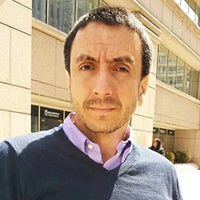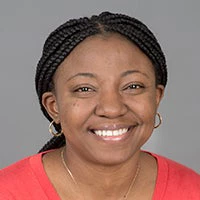The Phrase, “Nigeria: the giant of Africa”, has been on the lips of its citizens lately, and to an extent, they have earned the right to say so. Over the last decade, the Nigerian economy experienced tremendous growth and was recently named Africa’s Number One Economy by The Economist. This accolade is due to the recent GDP rebasing, which has enabled the size of the Nigerian economy to surpass that of South Africa, as well as a solid growth record. This fast economic growth is reflected in an increase in specialized professionals that predominantly make up Nigeria’s Middle Class.
Through history, the presence of the middle class, also known as the bourgeoisie, has always been an indication of, and catalyst for, economic growth. Thus, an examination of Nigeria’s middle class could tell a lot about the structural transformation the country is undergoing.
Due in large part to data deficiencies, there has been little rigorous analysis on the middle class in Nigeria despite the recognition of the growing importance of this group. Combining recently available panel data from the World Bank Living Standards Measurement Study - Integrated Surveys on Agriculture (LSMS-ISA) project, and previous cross section data from the National Bureau of Statistics (NBS), our paper titled “No Condition Is Permanent: Middle Class in Nigeria in the last Decade,” takes an in-depth look into the size and structure of Nigeria’s Middle Class.
We use the VAMC- Vulnerability Approach to Middle Class (previously applied to Latin American countries) to define Nigeria’s middle class, their characteristics and their share of the total population. This VAMC method is based on the idea that beyond a certain threshold of vulnerability, a household can be classified as middle class. In this case, we estimate the expenditure associated with a 10 percent probability of falling into poverty and use this as the middle class threshold for Nigeria. The estimated expenditure level associated with this probability was a daily income rate of $2.70 to $3.02 (348-389 Naira). This implies that a middle class Nigerian is an individual whose possibility of earning less than $2.70-$3.02 or 348-389 naira a day is 10% or less. This is close to the estimation by the African Development Bank (ADB), which estimates that African households that earn around $4 to$10 a day are considered to be lower-middle class.
Using the VAMC estimate, we find that about 20 percent of Nigerian households qualify as middle class. The $3 dollar estimate is low by some standards, even for developing countries. If the estimated expenditure for Latin America of around $10 was used, the share of Nigerian households qualifying for middle class status will be more than halved. To explore changes to the middle class in the past 10 years, we used survey-to-survey imputation and applied the same $3 threshold to household data collected in 2003. The findings show improvements between 2003 and 2013. The middle class size increased from 13 percent to 19 percent while poverty reduced from 45 percent to 33 percent. Despite these positive trends, the findings still show a heterogeneous picture of poverty and the middle class in Nigeria.
Regional differences show that there are more middle class households in the southern region than in the northern region. The Southern middle class made up more than 26% of the total population, while the north east & northwest middle class made up less than 10% of the population. This uncertainty of household livelihood is reflected using the GHS-Panel data (2011 and 2013), where the poverty status of some households changed. In 2013, 13% of households who were considered to be non-poor in 2010 became poor. Also, 38% of people who were considered to be poor in 2010 became non-poor in 2013; these changes in socio-economic status occurred due to economic shocks between 2011 and 2013 in Nigeria.
These findings show that households are quite vulnerable and any slight shock could change their poverty status. Though the majority of households are above the poverty line, many continue to live with an average or high level of vulnerability to poverty –with more than 10 percent of households falling in this category. We also found that overall, higher education, better employment opportunities, possession of relevant assets, and residence in urban areas all increase the chances of being part of the middle class.
What can we conclude from these findings? Yes, the middle class is growing and poverty is falling. But - and it’s a big but- , the levels of improvement do not appear to match the growth the country has experienced. As a World Bank report on Nigeria aptly asks “Where has all the growth gone?” The policy implications are two-pronged. First, growth has to be inclusive. High growth rates in a country without accompanying significant reduction in poverty, improved infrastructure, health and education, means very little to or has little impact on majority of its citizens. Secondly, there is the need for effective safety nets. Given the vulnerability of the majority of households to poverty, social safety nets should be put in place to help households deal with economic shocks and reduce the likelihood of falling back into poverty.
If somehow growth can be more inclusive with proper safety nets to buffer shocks especially for the vulnerable, Nigeria could be well on its way to becoming the true “Economic Giant of Africa.”
Through history, the presence of the middle class, also known as the bourgeoisie, has always been an indication of, and catalyst for, economic growth. Thus, an examination of Nigeria’s middle class could tell a lot about the structural transformation the country is undergoing.
Due in large part to data deficiencies, there has been little rigorous analysis on the middle class in Nigeria despite the recognition of the growing importance of this group. Combining recently available panel data from the World Bank Living Standards Measurement Study - Integrated Surveys on Agriculture (LSMS-ISA) project, and previous cross section data from the National Bureau of Statistics (NBS), our paper titled “No Condition Is Permanent: Middle Class in Nigeria in the last Decade,” takes an in-depth look into the size and structure of Nigeria’s Middle Class.
We use the VAMC- Vulnerability Approach to Middle Class (previously applied to Latin American countries) to define Nigeria’s middle class, their characteristics and their share of the total population. This VAMC method is based on the idea that beyond a certain threshold of vulnerability, a household can be classified as middle class. In this case, we estimate the expenditure associated with a 10 percent probability of falling into poverty and use this as the middle class threshold for Nigeria. The estimated expenditure level associated with this probability was a daily income rate of $2.70 to $3.02 (348-389 Naira). This implies that a middle class Nigerian is an individual whose possibility of earning less than $2.70-$3.02 or 348-389 naira a day is 10% or less. This is close to the estimation by the African Development Bank (ADB), which estimates that African households that earn around $4 to$10 a day are considered to be lower-middle class.
Using the VAMC estimate, we find that about 20 percent of Nigerian households qualify as middle class. The $3 dollar estimate is low by some standards, even for developing countries. If the estimated expenditure for Latin America of around $10 was used, the share of Nigerian households qualifying for middle class status will be more than halved. To explore changes to the middle class in the past 10 years, we used survey-to-survey imputation and applied the same $3 threshold to household data collected in 2003. The findings show improvements between 2003 and 2013. The middle class size increased from 13 percent to 19 percent while poverty reduced from 45 percent to 33 percent. Despite these positive trends, the findings still show a heterogeneous picture of poverty and the middle class in Nigeria.
Regional differences show that there are more middle class households in the southern region than in the northern region. The Southern middle class made up more than 26% of the total population, while the north east & northwest middle class made up less than 10% of the population. This uncertainty of household livelihood is reflected using the GHS-Panel data (2011 and 2013), where the poverty status of some households changed. In 2013, 13% of households who were considered to be non-poor in 2010 became poor. Also, 38% of people who were considered to be poor in 2010 became non-poor in 2013; these changes in socio-economic status occurred due to economic shocks between 2011 and 2013 in Nigeria.
These findings show that households are quite vulnerable and any slight shock could change their poverty status. Though the majority of households are above the poverty line, many continue to live with an average or high level of vulnerability to poverty –with more than 10 percent of households falling in this category. We also found that overall, higher education, better employment opportunities, possession of relevant assets, and residence in urban areas all increase the chances of being part of the middle class.
What can we conclude from these findings? Yes, the middle class is growing and poverty is falling. But - and it’s a big but- , the levels of improvement do not appear to match the growth the country has experienced. As a World Bank report on Nigeria aptly asks “Where has all the growth gone?” The policy implications are two-pronged. First, growth has to be inclusive. High growth rates in a country without accompanying significant reduction in poverty, improved infrastructure, health and education, means very little to or has little impact on majority of its citizens. Secondly, there is the need for effective safety nets. Given the vulnerability of the majority of households to poverty, social safety nets should be put in place to help households deal with economic shocks and reduce the likelihood of falling back into poverty.
If somehow growth can be more inclusive with proper safety nets to buffer shocks especially for the vulnerable, Nigeria could be well on its way to becoming the true “Economic Giant of Africa.”




Join the Conversation